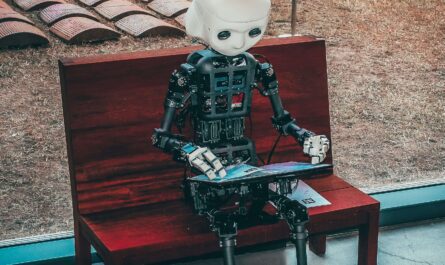How AI Helps You Build User-Centered Product Designs
• Behavior prediction tools • Personalization through AI • Case Studies
Meet Amina—A New Product Designer on a Mission
Amina is a junior product designer. She loves crafting beautiful screens, but she always worries, “Am I really designing what users want?”
One day, her manager asked her to redesign a learning app so it felt more personal for each user. Amina knew she needed to understand user behavior on a deeper level—but how?
That’s when she discovered AI-powered tools that predict behavior, personalize flows, and turn static designs into user-centered experiences.
This is the story of how AI can help you, too.
Why User-Centered Design Matters More Than Ever
Modern product design is not just about pretty screens—it’s about meeting real user needs. If your app feels generic, users leave. If it feels personal, they stay, click more, and come back.
But personalization and predicting what users want used to require big data teams and weeks of research.
Now? AI makes it accessible—even for solo designers and small teams.
Behavior Prediction Tools—Know What Users Will Do Next
Imagine designing a checkout page. Wouldn’t it help if you knew which button users skip or where they drop off?
AI behavior prediction tools like Hotjar AI, FullStory, and UXCam analyze heatmaps, clicks, scrolls, and session replays. Some tools even suggest layout tweaks automatically.
How Amina Used It:
She integrated Hotjar AI with her prototype. In 2 days, she saw where learners stopped reading. She tweaked the flow—and user engagement went up 30%.
Best For:
- Designers who want real data insights
- Spotting friction points
- Quick A/B tests
Personalization Through AI—One App, Many User Journeys
Personalization is when your app adapts to each user. Netflix does it with recommended shows. E-commerce apps do it with product suggestions.
With AI, you can build smart UI components that adjust based on behavior, location, or preferences—with no heavy coding.
Tools to Try:
- Adobe Sensei: Automates content recommendations
- Dynamic Yield: Adjusts layouts and offers in real time
- ChatGPT plugins: Generate personalized microcopy for different audiences
Amina’s Use Case:
She used Dynamic Yield for the learning app’s homepage. Returning students saw a “Continue Learning” CTA. New users saw a friendly welcome tour. Retention improved—all thanks to AI-driven personalization.
Case Study—Turning Insights Into Action
Case: Small EdTech startup, limited team, big goal: boost signups by 40%.
- Step 1: They used UXCam to track user behavior in the sign-up flow.
- Step 2: They fed the data into Adobe Sensei to test micro-personalizations.
- Step 3: They wrote personalized push notifications with ChatGPT.
Result: Signups rose by 45% in one month. The design team did not write a single line of code—AI handled the insights and suggestions.
AI Tools for Beginners—Where to Start?
You don’t need to be a data scientist or coder. Many AI tools are drag-and-drop or plug-ins for Figma, Sketch, or Adobe XD.
Best beginner-friendly picks:
- Hotjar AI for behavior heatmaps
- UXCam for mobile app flows
- ChatGPT for microcopy
- Dynamic Yield for basic personalization A/B tests
How to Integrate AI Smoothly in Your Workflow
- Start Small: Pick one page or flow to test.
- Connect Tools: Use plug-ins or APIs that integrate with your current design tools.
- Analyze & Adjust: Let AI suggest—but always review as a human.
- Test & Improve: User-centered design is never “done.” Keep iterating.
The Future: AI + Human = Better UX
Will AI replace designers? Not at all. AI predicts, personalizes, and suggests. You—the designer—add emotion, empathy, and taste.
Together, you can build products that feel truly made for users.
Just like Amina, you can stop guessing—and start designing smarter.
Final Tips
Start with simple tools—they’re easy to learn.
Trust the data—but trust your instincts too.
Use AI for boring tasks—so you focus on creativity.
Related Reads (Easy Interlinking)
- Best AI Tools for Product Designers Using Figma
- Existing: How to Integrate AI Tools into Your Design Process
- Top Features to Look for in an AI Product Design Tool
FAQs
Q1. Do I need coding skills to use these AI tools?
No! Many AI tools for behavior and personalization are no-code or low-code.
Q2. Are these tools expensive?
Most have free tiers or trials. Paid plans scale with your needs.
Q3. Will AI replace product designers?
No. It will replace tasks, not your creative vision.





